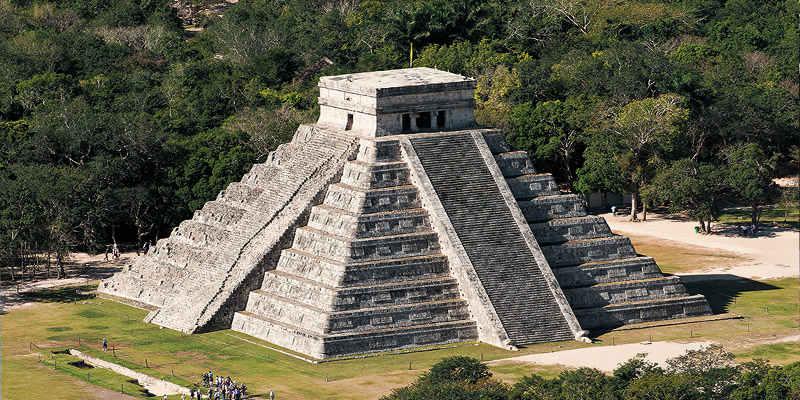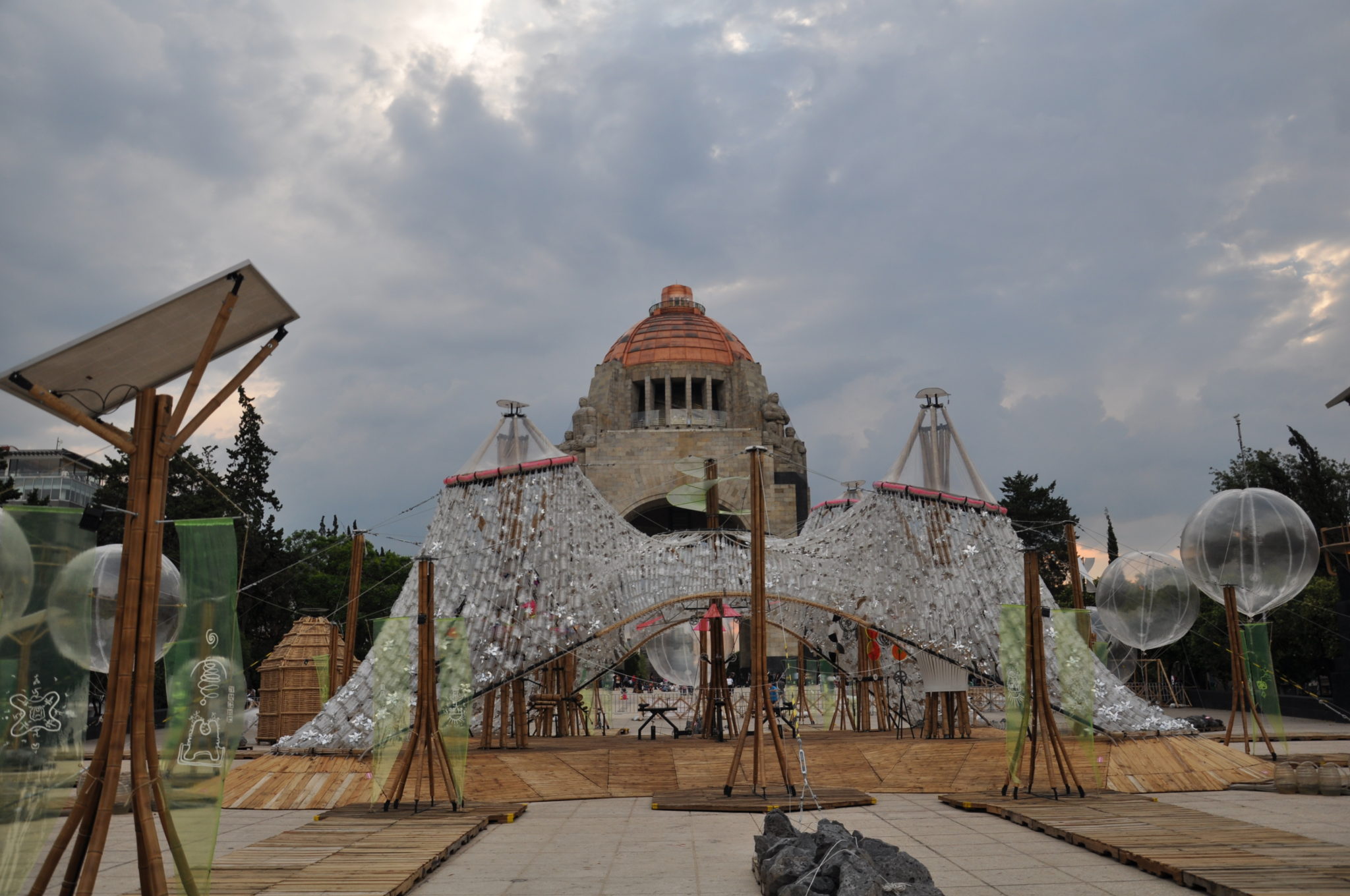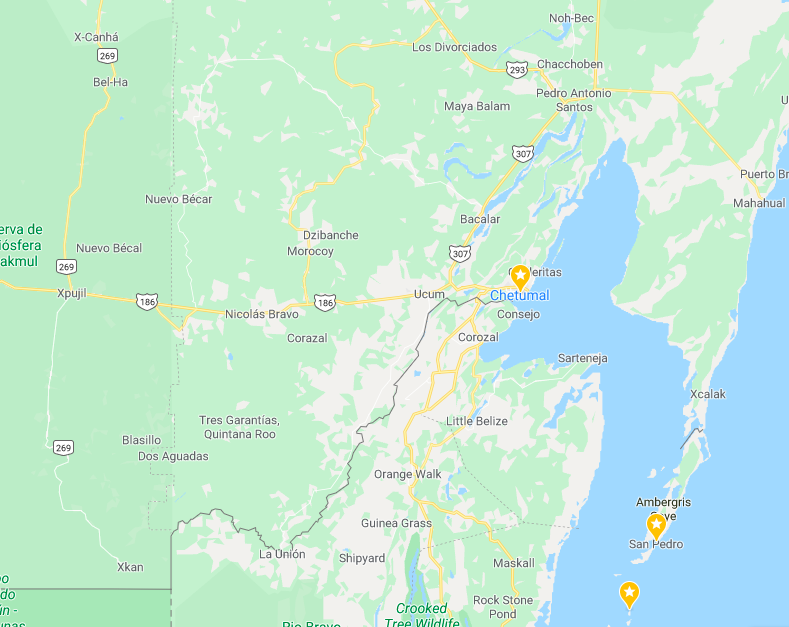
Chichén Itzá is an ancient ruined Maya city occupying an area of 10 square km in south-central Yucatán state, Mexico. It is located some 150 km east-northeast of Uxmal and 120 km east-southeast of the modern city of Mérida. The only source of water in the arid region around the site is from wells (cenotes) formed by sinkholes in limestone formations. Two big cenotes on the site made it a suitable place for the city and gave it its name, from chi (“mouths”), chen (“wells”), and Itzá, the name of the Maya tribe that settled there. Chichén Itzá was designated a UNESCO World Heritage site in 1988.

In order to get to Chichen Itza, we rented a car from Cancun to drive there as we wanted more flexibility. The journey from Cancun to Chichen Itza takes about 2 hours 15 minutes. If you do not want to self-drive, you can also join one of the several tour packages that leaves Cancun in the early morning and returns in the evening. If you have extra time, do stop by in the same town of Valladolid to admire the old colonial style architecture.

Before we reached Chichen Itza, we decided to visit one of the cenotes (sinkholes) that are popular in this region. Cenote Ik Kil (cenote means “natural well” in Spanish) is a large sinkhole on Mexico’s Yucatan Peninsula that’s sacred to the Mayans. It is usually combined with the visit to Chichen Itza, one of the wonders of the world. The Ik Kil cenote is in close proximity to Chichen Itza.

Entrance fee: 80MXP per adult, 40MXP per child (accurate as of Dec 2019)
They don’t accept any credit and debit cards so make sure to bring cash when you visit cenote Ik Kil. There are also changing rooms and toilets next to the stairs that lead down to the water. You can rent lockers for your valuables. Lockers cost 30MXP. Alternatively, you can also bring a waterproof bag and bring it down to the pool, where you would leave it by the side. Take note that you are responsible for your own belongings.

The hole is 90 feet deep, adorned in tropical vegetation and filled with clear blue water that Mayan royalty used for both relaxation and ritual sacrifices. In 2016, Red Bull held its Cliff Diving World Series at the sinkhole — divers leapt from the cenote’s surface and reached speeds of 40 mph before entering the water.

For amateur divers like us, we could choose to dive off the platform from two parts, the upper and lower section. At any one time, only two people are allowed at the top and there is a personnel on duty who will ensure that the water below is clear of people before those standing on the platform can dive in. Being adventurous, I chose to dive off the higher platform which is about 5m high, it was an exhilarating experience.

At the bottom of the cenote, there were many tourists mulling around. For those who were not diving into the pool, they were standing around to help their friends to take photos or busy taking selfies of themselves. In the waters, there was also a lot of people. Despite being a mass tourism site, we still enjoyed ourselves here and taking a dip in the cool waters was refreshing.

After the cenote experience, it was time to head over to the main highlight of the region – Chichen Itza. The site remains open to the public 365 days of the year, and received a minimum of 3500 tourists per day, a number which can reach 8000 daily visitors in the high season.

This sacred site was one of the greatest Mayan centres of the Yucatán peninsula. Throughout its nearly 1,000-year history, different peoples have left their mark on the city. The Maya and Toltec vision of the world and the universe is revealed in their stone monuments and artistic works. The fusion of Mayan construction techniques with new elements from central Mexico make Chichen-Itza one of the most important examples of the Mayan-Toltec civilization in Yucatán. Several buildings have survived, such as the Warriors’ Temple, El Castillo and the circular observatory known as El Caracol.

This is the most famous pyramid of all, which is the Temple of Kukulkan (also known as El Castillo), a towering stepped pyramid that has considerable astronomical significance: Each side has 91 steps leading to a top platform, making the total step count 365, one for each day of the year. Twice a year, during the autumn and spring equinoxes, a shadow resembling a wavy snake creeps down the temple steps, eventually meeting up with an intricately carved snake head at the base of the stairs.

Even though we arrived in the afternoon and thought we could evade the mass tourist crowds, but the tour buses still kept coming and depositing new groups of tourists. Seems like going in the afternoon is also not such a good idea, but in the morning there are more tourists for sure. The archeological site is huge and we spent about 2.5 hours at the place, taking lots of pictures. There is also a cenote within Chichen Itza but it is not open to the public for swimming as the water contains toxic chemicals.

The annoying part at Chichen Itza is that there are lots of vendors all trying to get you to buy the same stuff. They kept saying $1 only, but this is their ploy to lure you over to their shop and ask you to get stuff, with the minimum price being more than $1.
Entrance fee: 480MXP (S$34 as of Dec 2019) which is quite expensive due to its status as a UNESCO World Heritage Site. The entrance fees were recently doubled in 2019.
Are you interested to visit the Chichen Itza after reading my article?


